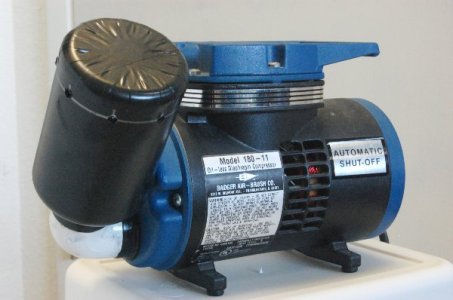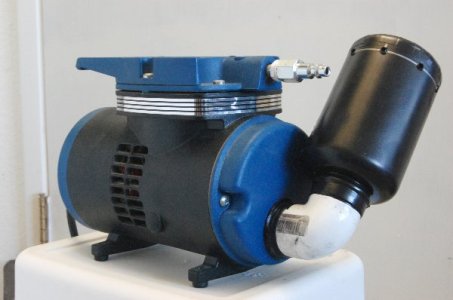Oh, I'm not looking to silence the garage compressor. As I said, I'm looking to escape and/or replace it. That was only a $90 compressor anyway, so bulk and portability issues aside, it isn't worth spending half the cost of a new (better) compressor building a box for it.
What I'm looking to silence is the little Badger compressor. The 180-11, which is (or appears to be) an older version of this. It's a lot "quieter" than the garage compressor, but not actually quiet by any means (I've noticed that what hardware people consider "quiet" tends to be around 40db above what a laymen would consider quiet). I wouldn't feel safe running it with someone sleeping in the same house.
At the moment I'm cobbling together an intake muffler. I've been doing some reading, and it looks like that might help a bit on its own. Maybe. We'll see. If not, a box for it will be a lot smaller and cheaper (especially if I can find a prefab container of the right dimensions). Not looking for totally silent, just something I can run without it being distracting to me or disruptive to others.
What I'm looking to silence is the little Badger compressor. The 180-11, which is (or appears to be) an older version of this. It's a lot "quieter" than the garage compressor, but not actually quiet by any means (I've noticed that what hardware people consider "quiet" tends to be around 40db above what a laymen would consider quiet). I wouldn't feel safe running it with someone sleeping in the same house.
At the moment I'm cobbling together an intake muffler. I've been doing some reading, and it looks like that might help a bit on its own. Maybe. We'll see. If not, a box for it will be a lot smaller and cheaper (especially if I can find a prefab container of the right dimensions). Not looking for totally silent, just something I can run without it being distracting to me or disruptive to others.


